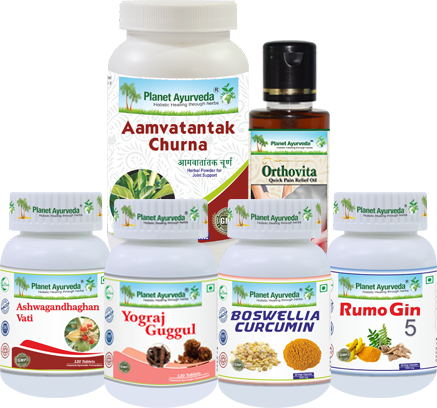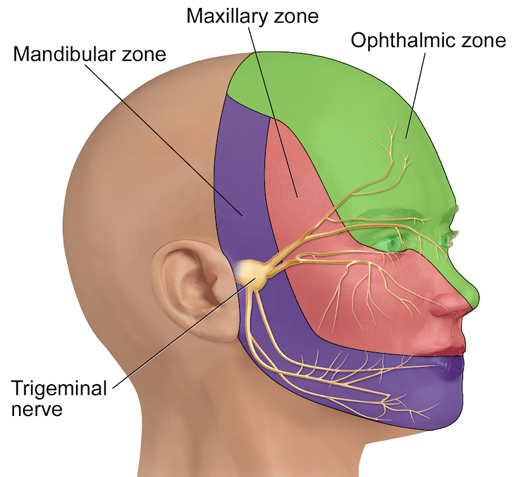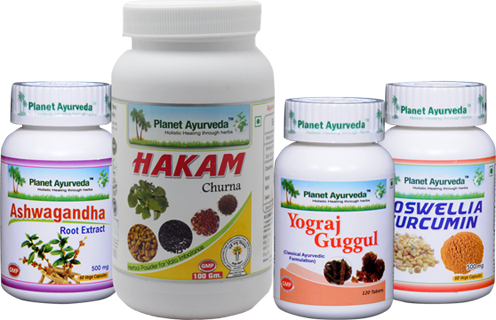Abstract
Carpal Tunnel Syndrome (CTS) is a prevalent condition that causes discomfort in the wrist and hand due to the compression of the median nerve within the carpal tunnel. This pressure leads to symptoms such as pain, tingling, numbness, and weakness, typically affecting the thumb, index, and middle fingers. Carpal Tunnel Syndrome is often linked to repetitive wrist motions, underlying health issues like diabetes, arthritis, obesity, and pregnancy. Early detection and treatment are essential to avoid permanent nerve damage and loss of hand function. Treatment may involve non-invasive options such as splinting, anti-inflammatory medications, physical therapy, and ergonomic adjustments. In more severe cases, surgery may be necessary to relieve pressure on the nerve. A comprehensive treatment plan for Carpal Tunnel Syndrome aims to alleviate symptoms, prevent further nerve damage, and restore normal hand function. This abstract summarizes the causes, symptoms, diagnostic approaches, and available treatment options for Carpal Tunnel Syndrome. In this article we will discuss this in detail and we will also discuss the Ayurvedic overview and management.

Introduction
Carpal Tunnel Syndrome is a widespread condition that affects the wrist and hand, caused by the compression of the median nerve as it travels through the narrow carpal tunnel in the wrist. This pressure on the nerve results in symptoms such as tingling, numbness, pain, and weakness, mainly in the thumb, index, and middle fingers. Carpal Tunnel Syndrome is commonly associated with repetitive hand movements, poor wrist positioning, and medical conditions such as diabetes, arthritis, and obesity, as well as factors like pregnancy. If left untreated, Carpal Tunnel Syndrome can disrupt daily activities and decrease the quality of life. Early diagnosis and prompt treatment are essential to prevent permanent nerve damage and restore normal hand function.
Causes
Carpal Tunnel Syndrome happens when the median nerve, which runs through the wrist, gets squeezed or pressed. This pressure can cause discomfort, numbness, tingling, and weakness in the hand and fingers. Several factors can lead to this condition:
1. Repeated Hand Movements
- Constant Wrist Use: Jobs or activities that involve frequent wrist motion, like typing or working on an assembly line, can put stress on the median nerve.
- Poor Hand Positioning: Performing tasks with improper wrist positioning can make the nerve more likely to get compressed.
2. Injury or Trauma
- Wrist Injuries: Breaks or dislocations in the wrist can change the shape of the carpal tunnel, increasing pressure on the nerve.
- Swelling or Inflammation: After an injury, inflammation or swelling can reduce the space in the tunnel, putting pressure on the nerve.
3. Medical Conditions
- Diabetes: High blood sugar can lead to nerve damage, making people with diabetes more susceptible to Carpal Tunnel Syndrome.
- Arthritis: Conditions like rheumatoid arthritis cause joint inflammation, which can affect the wrist and press on the nerve.
- Thyroid Issues: An underactive thyroid (hypothyroidism) can lead to fluid retention and tissue changes, increasing the likelihood of Carpal Tunnel Syndrome.
- Pregnancy: Hormonal changes during pregnancy can cause swelling, which can compress the carpal tunnel.
4. Genetic Factors
- Small Carpal Tunnel: Some people are born with a naturally smaller carpal tunnel, which makes them more prone to Carpal Tunnel Syndrome.
- Family History: A genetic predisposition to Carpal Tunnel Syndrome may increase the risk if it runs in your family.
5. Obesity
- Excess Weight: Carrying excess weight can put added pressure on the wrist and cause fluid retention, both of which may contribute to Carpal Tunnel Syndrome.
6. Age and Gender
- Age: Carpal Tunnel Syndrome is more common in people over 40, as wear and tear on the wrist increases with age.
- Gender: Women are more likely to develop Carpal Tunnel Syndrome, possibly due to hormonal differences and smaller wrist structures.
Symptoms
The symptoms of Carpal Tunnel Syndrome occur due to the pressure on the median nerve in the wrist. These symptoms can range from mild to severe and may affect one or both hands. Common symptoms include:
1. Numbness and Tingling
- Fingers and Hand: A common early sign is numbness or a "pins and needles" sensation, especially in the thumb, index, middle, and part of the ring finger.
- At Night: Symptoms often worsen at night, causing disrupted sleep due to the position of the wrist during sleep.
2. Pain
- Wrist and Hand: Pain may develop in the wrist, hand, or fingers, sometimes radiating up to the forearm.
- Increased Discomfort with Activity: Pain can worsen with repetitive wrist movements or activities such as typing, texting, or gripping objects.
3. Weakness
- Hand Grip: People with Carpal Tunnel Syndrome may experience weakness in the hand, making it difficult to grip objects, hold a pen, or perform tasks requiring fine motor control.
- Dropping Things: Weakness in the hand can lead to dropping items more often due to decreased strength.
4. Loss of Sensation
- Fingers: As the condition progresses, affected fingers may lose some sensation, making it difficult to feel textures or temperatures.
5. Swelling Sensation
- Although the wrist may not visibly swell, some people report a feeling of fullness or swelling in the hand or fingers.
6. Hand Discomfort or Aching
- Some individuals experience persistent aching in the hand, especially after extended periods of wrist use.
7. Clumsiness
- The combination of numbness, tingling, and weakness may cause a feeling of clumsiness or uncoordination, affecting day-to-day tasks.
Diagnosis
To diagnose Carpal Tunnel Syndrome, a healthcare professional will typically conduct a combination of the following steps:
1. Medical History
- Symptom Discussion: When it started, its severity, and whether it occurs at specific times (e.g., at night or after repetitive activities).
- Medical Conditions: Diabetes, arthritis, or thyroid problems.
- Occupational and Lifestyle Factors: Daily activities, including work habits, hobbies, or technology use, will help identify repetitive motions that could contribute to Carpal Tunnel Syndrome.
2. Physical Examination
- Wrist and Hand Assessment: Examine wrist, hand, and fingers for signs of weakness, muscle atrophy, or reduced sensation.
- Tinel’s Sign: Tap lightly over the median nerve at the wrist to see if it causes tingling or an electric shock-like sensation in the fingers. This can indicate nerve irritation.
- Phalen’s Test: Hold wrists in a flexed position for about a minute to see if it reproduces symptoms such as tingling or numbness. This can help identify compression of the median nerve.
3. Electromyography (EMG) and Nerve Conduction Studies
- Nerve Conduction Study: This test measures the speed at which electrical impulses travel through the median nerve. Slower speeds can indicate nerve compression.
- Electromyography (EMG): EMG can assess the electrical activity in the muscles controlled by the median nerve. It helps determine if the nerve is damaged or compressed.
4. Ultrasound or MRI
- In some cases, imaging techniques like ultrasound or MRI may be used to visualize the carpal tunnel and check for abnormalities, such as swelling, cysts, or other structural issues that may be compressing the median nerve. However, these tests are not always necessary for diagnosing Carpal Tunnel Syndrome.
5. Differential Diagnosis
- Ruling Out Other Conditions: Carpal Tunnel Syndrome symptoms overlap with other conditions, such as rheumatoid arthritis, tendonitis, or cervical spine issues. The doctor may perform additional tests to rule out these conditions.
Treatment
Treatment of Carpal Tunnel Syndrome depends on how severe the symptoms are. Some common approaches for this condition are:
1. Non-Surgical Treatment
- Rest and avoid aggravating movements
- Wrist Braces
- Physical Therapy
- Pain Relievers
- Steroid Injection
2. Surgery
- Carpal Tunnel Release Surgery: This involves cutting the ligament that’s pressing on the nerve, which creates more space for the median nerve.
- Endoscopic Surgery: This is a less invasive surgery that uses small cuts and a camera to help release the pressure on the nerve.
3. Alternative Therapies
- Acupuncture
- Chiropractic Care
- Yoga
Ayurvedic Overview
According to Ayurveda, there is no direct correlation to Carpal Tunnel Syndrome. But the symptoms of this disease can be correlated with the following other conditions:
Vishwachi
In this condition, vitiated Vata afflicts the Kandaras (tendons/nerves), which extend from the front of the fingers and palm to the back, passing through the forearm and arm. This causes stiffness and rigidity of the tendons, leading to the destruction of the functions of the arm. This condition is called Vishwachi.
Vatarakta
This condition mainly affects the hands, fingers, feet, toes, and all the joints in the body. It originates from the root of the hands and feet and gradually spreads all over the body. In this condition, vitiated Vata and Rakta combine together and cause Vatarakta. Symptoms such as loss of sensation, pricking and splitting pain, and numbness resemble those of Carpal Tunnel Syndrome.
Ekangvata
The symptoms of Carpal Tunnel Syndrome can be correlated with Ekangvata in the hands. In this condition, Vata is vitiated in the hands, leading to symptoms like numbness, loss of movement, and sensations like needles, pins, and ants crawling.
Treatment
Line of treatment for this condition is as follows:
Panchkarma
- Abhyanga (Oil Massage)
- Swedana (Sweating therapy)
- Patra Pinda Sweda
- Shashtik Shali Pinda Sweda
- Ksheer Dhara (Stream pouring of milk)
- Kshaya Dhara (Stream pouring of herbal decoction)
- Virechana (Purgation)
- Gandharvahastadi Kashayam
- Sukumara Kashayam
- Tiktaka Ghritam
- Mridwikadi Leham
- Trivrit Leham
- Vasti (Medicated enema)
- Asthapana Vasti (Herbal Decoction enema)
- Ksheer Basti (Milk medicated with herbal decoction)
- Sheha Basti (Enema with herbal oils)
- Matra Basti (Daily given enema in small doses)
- Nasya (Medicines through Nasal route)
- Anu Tailam
- Shadbindu Tailam
- Mahamasha Tailam
Ayurvedic Medicine
- Rasonadi Kashayam
- Guggulutiktakam Kashayam
- Maharasnadi Kashayam
- Ashwagandharisthtam
- Balarishtam
- Kapikachhu Churna
- Dashmool Haritaki Lehyam
- Ekang Veera Rasa
- Brihat Vata Chintamani Rasa
- Vayu Gulika
- Dhanwantaram Gulika
Herbal Remedies for Carpal Tunnel Syndrome by Planet Ayurveda
Planet Ayurveda is a globally recognized Ayurvedic wellness brand dedicated to reviving ancient healing traditions for modern-day health challenges. Founded by Dr. Vikram Chauhan, a renowned Ayurvedic expert, Planet Ayurveda specializes in preparing 100% pure, natural, and vegetarian herbal formulations derived from time-tested Ayurvedic principles. Each product is prepared using high-quality herbs, grown organically and processed in GMP-certified facilities, ensuring safety and efficacy without any chemical additives or fillers. Whether it's chronic illness, lifestyle-related concerns, or preventive wellness, Planet Ayurveda offers holistic solutions grounded in nature, science, and centuries-old wisdom.
Herbal Remedies for Carpal Tunnel Syndrome
Product Description
1. Boswellia Curcumin
This tablet is a standardised pure extract of Shallaki (Boswellia Serrata), Curcumin (Curcuma Longa). This capsule helps to reduce inflammation and swelling around the carpal tunnel, relieves pain and discomfort associated with nerve compression. It improves blood circulation in the affected area.
Dosage : 1 capsule two times a day with lukewarm water
2. Rumogin
This capsule is a standardised pure extract of Haridra (Curcuma Longa), Sonth (Zingiber Officinale), Shallaki (Boswellia Serrata), Maricha (Piper Nigrum), Pippali (Piper Longum). It helps maintain joint health by alleviating pain and stiffness, while enhancing joint flexibility, thanks to its anti-inflammatory, anti-arthritic, and antioxidant properties.
Dosage : 1 capsule two times a day with lukewarm water after a meal
3. Yograj Guggul
This tablet is a standardised pure extract of Guggul (Commiphora mukul), Nagarmotha (Cyperus Rotundus), Chitrak (Plumbago Zeylanica), Amlaki (Emblica officinalis), Bibhitaki (Terminalia Bellirica), Pippali (Piper Longum), Kalonji (Nigella Sativa). These herbs used in this formulation help to strengthen the nervous system. It improves blood circulation and supports the health of nerves. It also helps to reduce pain, so it is very helpful in Carpal Tunnel Syndrome.
Dosage : 2 tablets two times a day with lukewarm water after a meal.
4. Ashwagandha Ghan Vati
This tablet is a standardised pure extract of Ashwagandha (Withania Somnifera). It is an adaptogenic herb and has anti-inflammatory properties. It helps to support the nervous system, which helps to alleviate nerve compression symptoms.
Dosage : 2 tablets two times a day with lukewarm water after a meal.
5. Aamvatantak Churna
This herbal powder is a pure blend of Ashwagandha (Withania Somnifera), Methi (Trigonella Foenum Graecum), Suranjaan (Colchicum Autumnale), Gorakhmundi (Sphaeranthus Indicus), Haridra (Curcuma Longa), Sonth (Zingiber Officinale). All these herbs used in this formulation help to reduce inflammation around the carpal tunnel. It helps to alleviate pain and improve circulation around the affected area.
Dosage : 1 tsp two times a day with lukewarm water after a meal.
6. Orthovita Oil
This oil is a Planet Ayurveda’s Patent Formulation. This oil is a blend of Shul Gajendra Oil, Gandhapura oil, Turpentine Oil, Saindhavadi Tailam, Camphor. These ingredients work together to create an exceptional formulation, contributing significantly to its benefits. Additionally, the Ortho Vita oil plays a key role in alleviating joint, bone, and muscle pain due to its ability to balance vata. This oil promotes smooth joint movement without any limitations and helps strengthen the joints over time.
Dosage : Apply this oil over the affected area.
Conclusion
In Conclusion, Ayurveda has no direct Correlation with Carpal tunnel Syndrome. It is correlated with Vata Vyadhi. Ayurveda offers a holistic approach to treat carpal tunnel syndrome by focusing on balancing the body’s doshas and addressing the root cause of the condition. Treatment for this condition includes Panchkarma therapies, Planet Ayurveda’s formulations, and some classic Ayurvedic formulations. Ayurvedic line of treatment for Carpal Tunnel syndrome helps to manage disease from its root cause. Thus, Ayurvedic management is very helpful in Carpal tunnel Syndrome.












